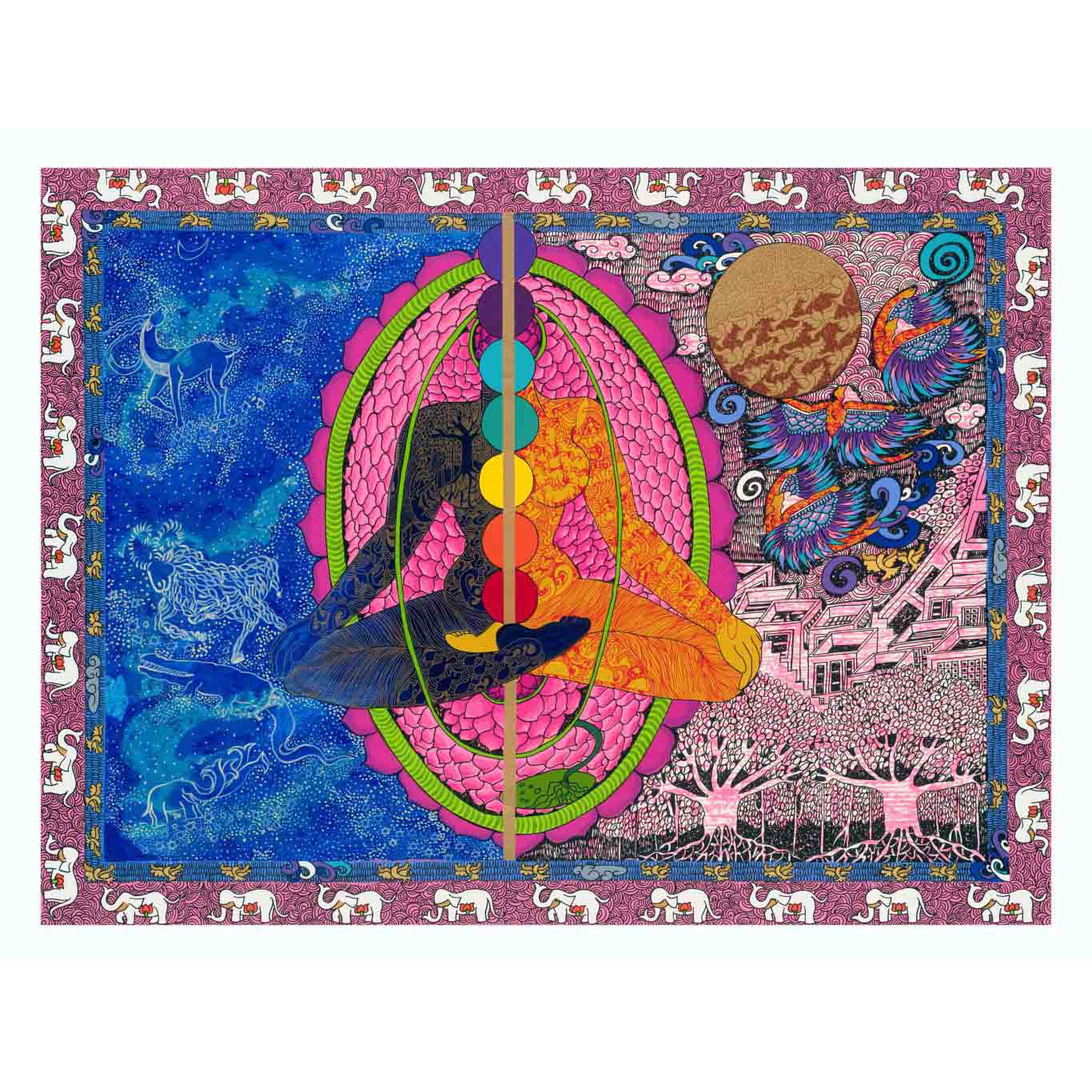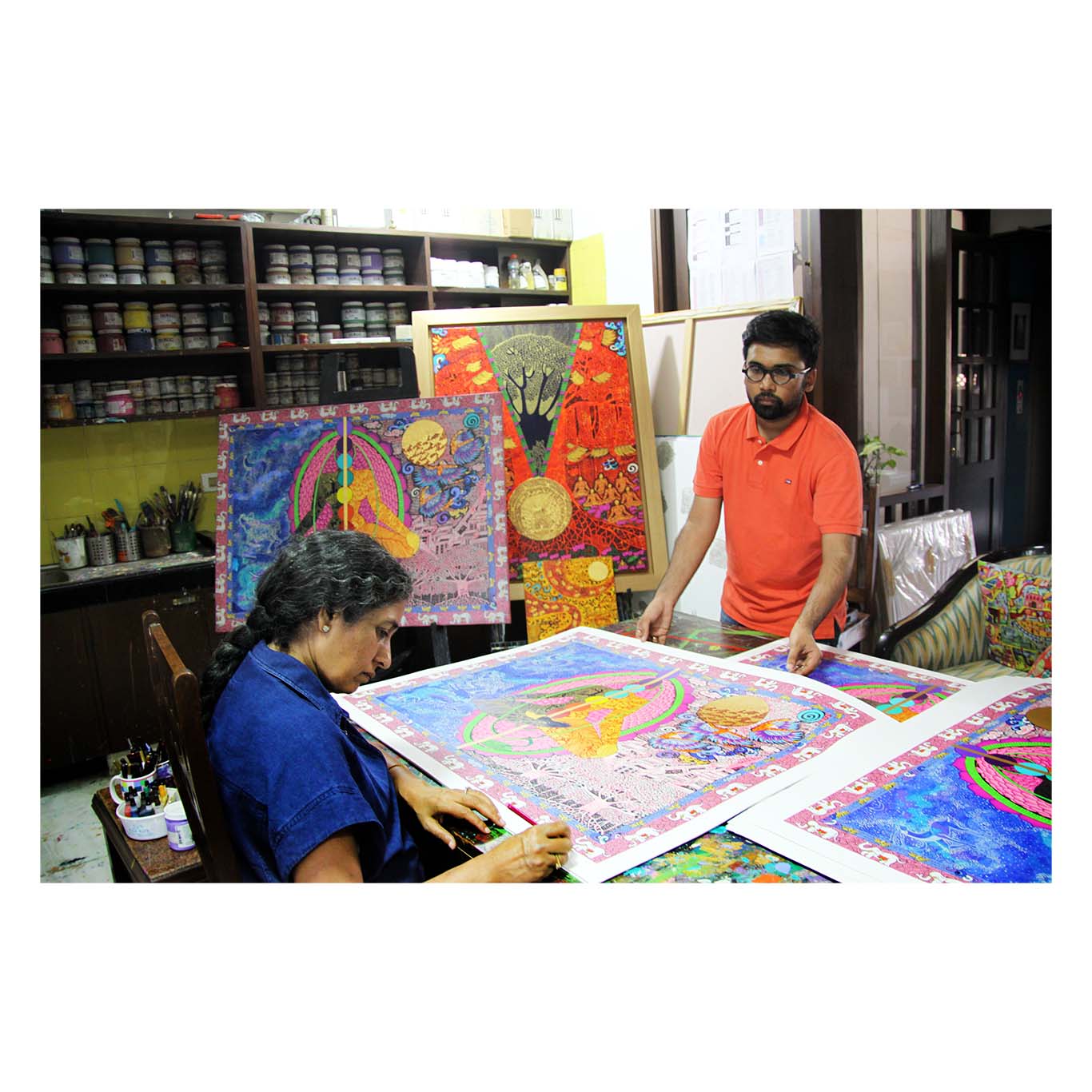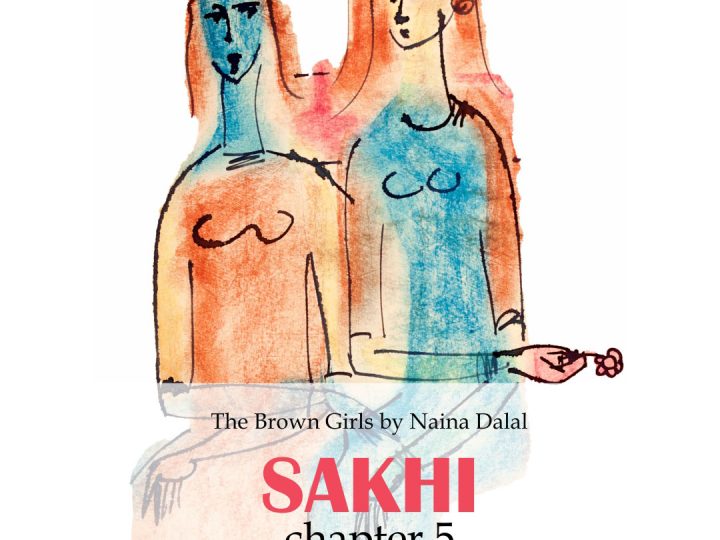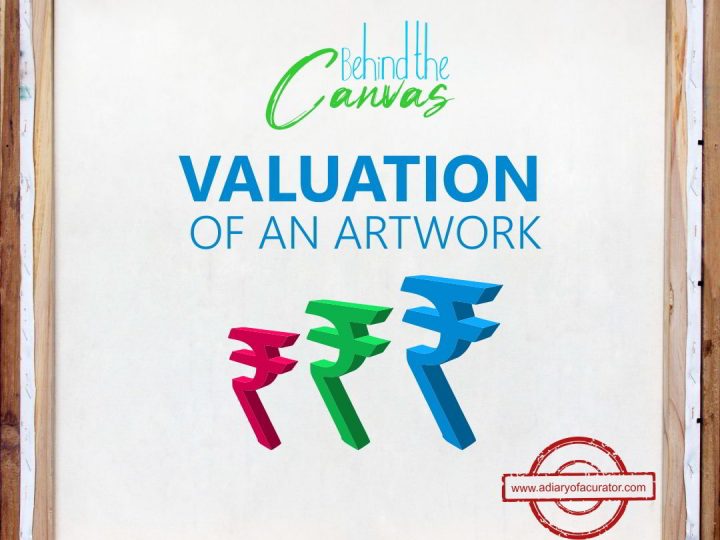In Chapter 6, Verse 18 of the Bhagavad Gita, Krishna describes the true yogi as one who has mastered the self, finding deep peace and equanimity through the control of mind and senses. This yogi perceives all beings with equal vision, recognizing the interconnectedness of life. Seema Kohli’s serigraph personifies this philosophy with its vibrant colours and minute detailing, creating a sense of positivity and calm. The artwork is unique in its meticulous technique, utilizing no single colour directly but instead applying layers that reveal multiple hues, particularly in the blues, which enhance depth and richness.
The lotus-shaped background and human-bird figure showcase the extensive research and precision involved in the process. The use of gold and broad patches of blue and pink highlight the artwork’s cleanliness and smooth finishing. Every detail, from the delicate animal figures to the transparency near the human figure’s knees, reflects our commitment to quality. This serigraph is significant in both Indian art and on the global stage, having received honours in Amsterdam and national awards in India. With over 84 tones and screens used in 125 editions, it stands as a testament to our dedication to the craft.
In addition to its aesthetic appeal, this serigraph serves as a bridge between traditional Indian art and contemporary expression. Kohli’s innovative approach highlights the importance of technique and detail, making each work not just a fine example of visual experience and storytelling. The careful blending of colors and textures invites viewers to explore the depth of the artwork, encouraging a meditative engagement that reflects the yogic principles of awareness and connection. As a result, this serigraph not only engages the eye but also connects with the spiritual themes of harmony and unity, reaffirming its significance in both local and global artistic dialogues.
This work evokes the Shanta Rasa through the yogic philosophy of interconnectedness and the harmonious blending of colors. This aesthetic quality encourages meditative reflection, creating a tranquil emotional state.
Kohli’s brilliance translates the concept of Vishwaroop from the Bhagavad Gita, illustrating God’s infinite and all-encompassing nature. Revealed to Arjuna by Lord Krishna in Chapter 11, the Vishwaroop emphasizes the interconnectedness of all beings and highlights God’s transcendence beyond human comprehension, as well as His immanent presence in life. This experience inspires Arjuna to fulfill his duty as a warrior, helping him overcome doubt and see beyond immediate conflicts. Ultimately, the Vishwaroop serves as a reminder of the unity of existence and the purpose of individual actions within the grand scheme of life.
Kohli’s artwork features busy, colorful detailing that engulfs viewers in its story. This intriguing serigraph, one of her most notable works, employs various tones and effects through mediums like foil, watercolor, and acrylic. The background is crafted using a layered technique that adds texture and transparency, with visible brush strokes and hues of red and yellow enhancing its depth.
Every element of the serigraph is meticulously layered, with even flat colors possessing underlying depth. The green and blue borders reveal two colors upon close inspection, while each circle showcases a flat gold or silver background adorned with fine, detailed lines. The fascinating transparent strokes, crimple effects, and peeling textures in the deity’s form contribute to the work’s uniqueness. With over 72 tones of color used to produce 125 editions, this exceptional artwork has received national and international awards, making it a must-have for any art collector.
Kohli’s serigraph evokes the Adbhuta rasa, as its depiction of the Vishwaroop and its infinite nature inspires wonder and admiration.
Hiranyagarbha, or the “golden womb,” is a meaningful metaphor. It represents not only a biological space but also a spiritual realm where creation unfolds, developing the proactive formation of new ideas that multiply and flourish. This concept underscores the significance of feminine power in the universe, where woman represents the ultimate giver and creator, infusing eternal and infinite life into all existence. Every woman is a manifestation of Shakti, a creator of life.
Leading contemporary artist Seema Kohli begins her work with the mantra “Guru Shukra Vighneshwara Namah,” invoking the lord of luxuries and intellect to infuse her creations with divine energy, hoping that the same vibrations resonate with the collector. Here, attention to detail is paramount; the intense subjects, intricate figures, and design elements demand careful handling.
The use of gold in Kohli’s work is particularly engaging. The way it is printed allows viewers to feel the essence of real gold foil on the pieces. Kohli’s female figures, rendered in gold and red, showcase minute details alongside rich hues of green, blue, and black. The interplay of dark and light, along with the varied thickness of black lines, adds depth to her compositions. She employs a range of line types—lyrical, complex, scribbled, rounded, curved, linear, thin, thick, and illustrative.
The balance of intricate lines, combined with exquisite color usage, creates striking contrasts of light and dark, as well as flat tones. In total, a diverse palette has been employed to produce 125 editions, showcasing the richness and complexity of her artistic vision. This serigraph has also garnered recognition, winning PrintWeek India National Awards and FESPA Honours for the best serigraphy both in India and abroad.
This work of Kohli evokes the Vatsalya rasa as it celebrates the deep bond of love and care that brings life reflecting the power of shakti and creation.
Photos and Text © Chaitya Dhanvi Shah
printing, distribution or copying of this text/images without permission is not allowed.











